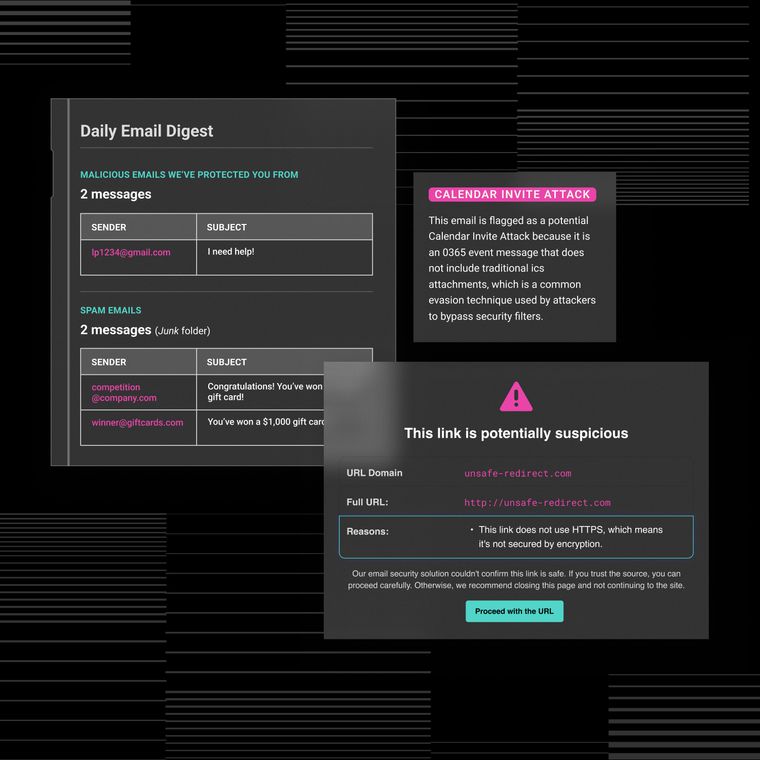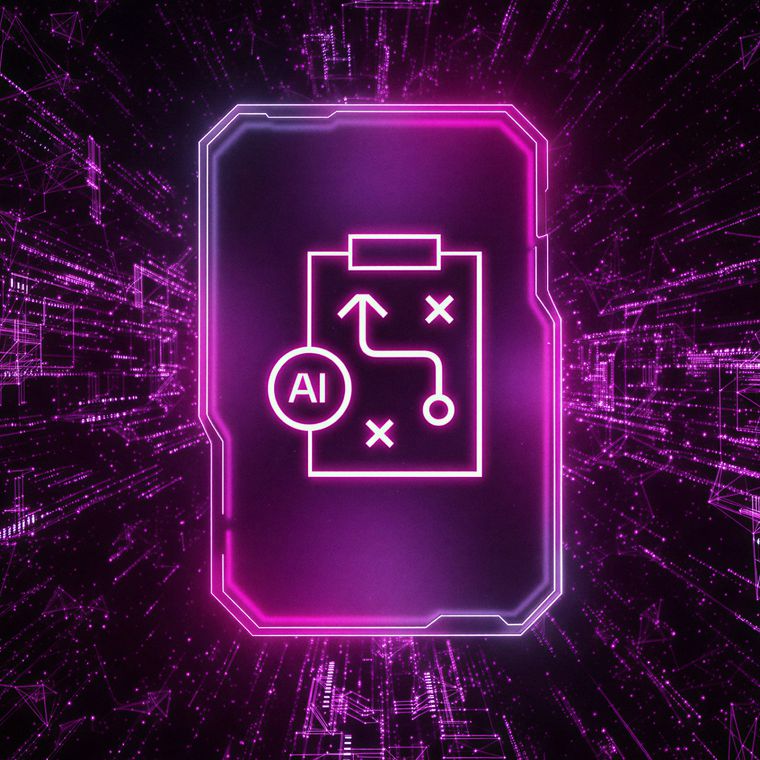From Burnout to Breakthrough: Why Human-Centered AI Is the Future of the SOC
Discover how human-centered AI is transforming the modern SOC—reducing analyst burnout, improving threat detection, and enabling more strategic operations.
July 22, 2025

The security operations center (SOC) is under pressure. Alert volume is surging, talent is in short supply, and analysts are burning out. Meanwhile, attackers continue to grow more sophisticated. But in the face of these mounting challenges, security teams are beginning to shift their strategy—adopting a human-centered approach to AI that enhances operations without compromising the human element.
In collaboration with Omdia, Abnormal set out to examine how AI is redefining the security operations center. Surveying 491 security leaders and analysts, the research uncovered broad agreement on the value AI delivers today—and where it's poised to drive the most impact moving forward. Here are some of the most notable insights.
1. Analyst Burnout Is Widespread—and Undermining Security Outcomes
The SOC remains heavily reliant on manual workflows, leaving analysts overwhelmed by high alert volumes and routine tasks. As a result, nearly three-quarters report limited time for strategic work—hindering their ability to engage in threat hunting, proactive defense, or professional development.
This burden directly impacts security performance: 44% of analysts say they spend too much time on repetitive tasks, while 35% report increased burnout.

2. AI Is Elevating—Not Replacing—the Role of the Analyst
AI isn’t displacing security talent—it’s amplifying it. According to the research, 96% of security leaders have no intention of reducing headcount as a result of AI adoption. Instead, they’re using it to increase efficiency and reallocate analyst time toward higher-value efforts like threat hunting, proactive security initiatives, and mentoring junior team members.
Notably, every analyst surveyed who uses AI on a daily basis reported meaningful changes to their day-to-day responsibilities.

3. The Autonomous SOC Is No Longer a Concept—It’s a Near-Term Reality
Security professionals across roles are aligned on one key point: automation is critical to scaling detection and response without increasing headcount. Over the next three to five years, AI is expected to take a leading role in streamlining SOC workflows, advancing behavioral analytics, and enabling more proactive threat prevention.
In fact, 80% of analysts and 75% of security leaders anticipate that autonomous SOCs will become the norm—signaling a major shift in how organizations approach cybersecurity operations.

4. Transparency and Trust Are Critical to Adoption
As AI becomes more integrated into SOC operations, security teams are focused on minimizing risk while maximizing value. Top concerns include data privacy, regulatory compliance, and the potential for new vulnerabilities. But importantly, only a small percentage of analysts are concerned about being replaced by AI.
When evaluating AI solutions, decision-makers prioritize:
Transparency into how models are built and trained
Third-party validation and peer-reviewed results
Demonstrable performance and operational impact
85% of respondents cited solution effectiveness as the most important evaluation criterion—reinforcing the need for outcomes over marketing claims.

5. A Human-Centered Approach Enables a More Strategic SOC
As AI takes on the burden of repetitive, manual tasks, security teams are gaining the capacity to focus on higher-impact work. This shift is helping organizations reimagine the SOC—not as a reactive function defined by alert triage, but as a strategic asset that proactively reduces risk.
According to the research, 59% of analysts who use AI daily say they now spend more time on advanced threat hunting, while 45% of security leaders report plans to reallocate AI-enabled time savings toward incident response and remediation.

Transforming the SOC Starts Here
Clearly, human-centered AI is already reshaping the modern SOC—improving analyst productivity, strengthening threat detection, and setting the stage for autonomous operations. Abnormal enables this transformation through precise behavioral modeling and automation that reduces alert fatigue, accelerates response times, and empowers security teams to focus on what matters most. By combining advanced threat detection with a deep understanding of human behavior, the Abnormal platform helps organizations shift from reactive defense to strategic, proactive security.
But this is only the beginning. To dive deeper into the data, explore additional insights from both analysts and security leaders, and see what’s next for AI in the SOC, download the full report: Human-Centered AI: Redefining the Modern SOC.
Related Posts
Get the Latest Email Security Insights
Subscribe to our newsletter to receive updates on the latest attacks and new trends in the email threat landscape.


